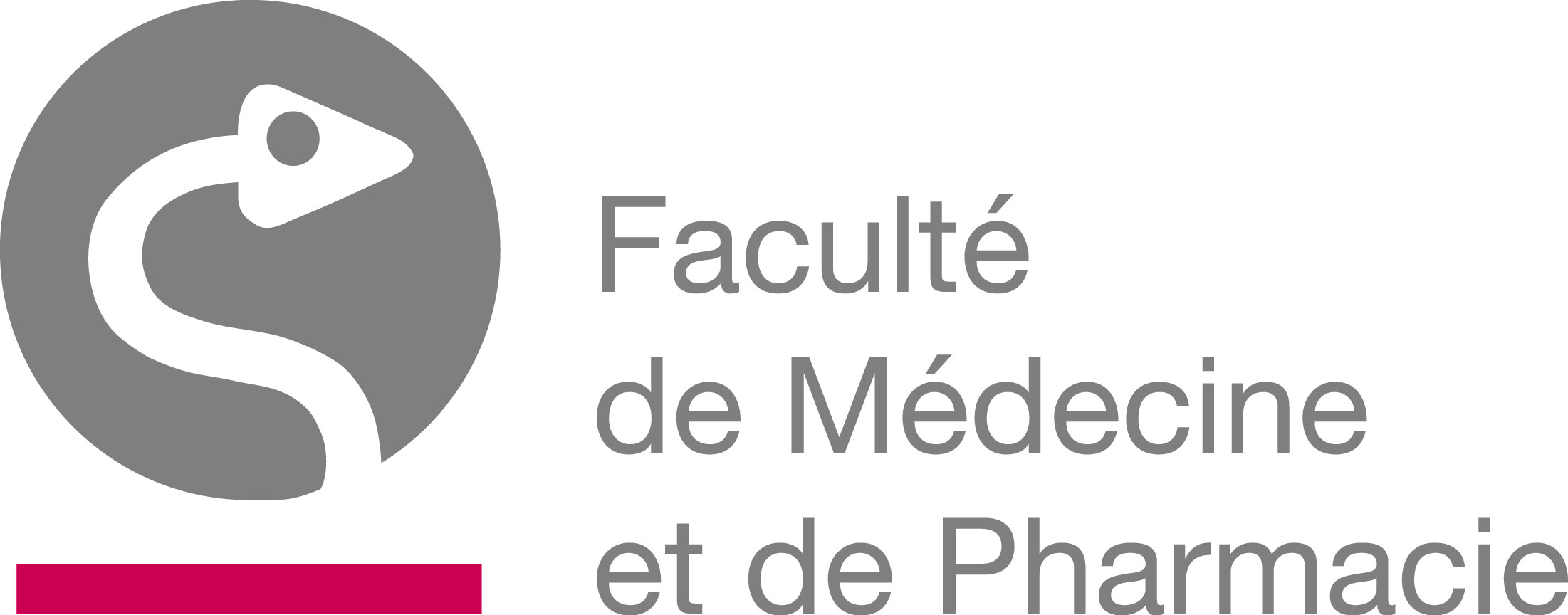 | Study programme | Français | |
 | Animal Biology | ||
Programme component of Bachelor's Degree in Biomedicine à la Faculty of Medicine and Pharmacy |
| Code | Type | Head of UE | Department’s contact details | Teacher(s) |
|---|---|---|---|---|
| UM-B2-BIOMED-005-M | Compulsory UE | COLET Jean-Marie | M125 - Biologie humaine et Toxicologie |
|
| Language of instruction | Language of assessment | HT(*) | HTPE(*) | HTPS(*) | HR(*) | HD(*) | Credits | Weighting | Term |
|---|---|---|---|---|---|---|---|---|---|
| Français | 30 | 30 | 0 | 0 | 0 | 5.00 | 5.00 |
| AA Code | Teaching Activity (AA) | HT(*) | HTPE(*) | HTPS(*) | HR(*) | HD(*) | Term | Weighting |
|---|---|---|---|---|---|---|---|---|
| M-BHTO-201 | Animal biology | 30 | 30 | 0 | 0 | 0 | Q1 | 100.00% |
| Unité d'enseignement | ||
|---|---|---|
 | UM-B1-BIOMED-001-M Biologie générale humaine | |
Objectives of Programme's Learning Outcomes
- Understand, describe, analyse and prioritise biological phenomena
- Understand basic scientific knowledge and be able to use it
- Understand and use different graphical representations of numerical values and their relationships
- Perceive spatial distribution, and understand two- and three-dimensional representations and interconvert them
- Understand the chronology of a phenomenon and master the time scales and their representations
- Control the molecular, morphological and functional approaches of normal and pathological conditions
- Understand the learning of physiological and pharmacological reasoning
- Understand experimental protocols in the biomedical domain
- Integrate concepts from different approaches/disciplines in a complex biomedical problem
- Develop reasoning skills
- Understand and apply the basic principles of reasoning (obtaining data, analysis, synthesis, comparison, the rule of three, syllogism, analogy, Boolean logic, etc.)
- Work with efficiency / accuracy / precision
- Demonstrate developed interpersonal skills
- Use a rich vocabulary linking concepts and words accurately
- Adapt lexical and syntactic choices in communication register (everyday language, medical language or scientific terminology)
- Summarise, explain, and argue
- Work in a team
- Share knowledge and information
- Submit reviews, reports and give oral presentations
- Manage resources
- Manage time
- Prioritise
- Use basic IT and bibliographic resources.
- Manage their studies
- Locate scientific information efficiently
- Compare different sources of information
- Read, interpret, and critique a scientific article
- Self-assess and give feedback
- Be open to research and demonstrate scientific curiosity
- Show a good knowledge of scientific English
- Understand and summarise a scientific article in English
Learning Outcomes of UE
<strong><u>The main objective</u></strong> of this course is to providing to students an overview of the major groups of existing and ancestral animals , tehir morphology, and the main adapotaitons allowing them to fulfill their basic needs and to take advantage of their environment
At the end of the class, the students will be able to :<strong>
</strong>
- describe how the memebrs from the different groups studied move, breathe, eat, deal wtih their metabolic wastes, feel their environment and reproduce themselves
- describe the general morphology and know the distinctive structures of the groups
- define and properly utilize zoological terminology
- dissect/observe the major structures associated with locomotion, breathing, circulaiton, excretion, reproduction, and perception.
- graphically and efficiently expose qualitative or quantitative information
Content of UE
1. Introduction
2. Major organisational plans :
- the cell as an organ (unicellular eukaryotes)
- pluricellular status (parazoans and diplobastic metazoans)
- Development of the mesoderm (triplobastic coelomates protostomians)
- Development of the mesoderm (triploblastic coelomates deuterostomians)
3. Major functions:
- Nutrition
- Respiration
- Relationship (protection, mobilit^y, perception)
- Integration (coordination, circulation)
- Reproduction
4. Animal sheaths
Prior Experience
Fundamentals in Biology
Basics in histology
Type of Assessment for UE in Q1
- Presentation and works
- Oral examination
- Written examination
- Practical test
Q1 UE Assessment Comments
Not applicable
Type of Assessment for UE in Q2
- N/A
Q2 UE Assessment Comments
Not applicable
Type of Assessment for UE in Q3
- Presentation and works
- Oral examination
- Written examination
- Practical Test
Q3 UE Assessment Comments
Not applicable
Q1 UE Resit Assessment Comments (BAB1)
Not applicable
Type of Teaching Activity/Activities
| AA | Type of Teaching Activity/Activities |
|---|---|
| M-BHTO-201 |
|
Mode of delivery
| AA | Mode of delivery |
|---|---|
| M-BHTO-201 |
|
Required Reading
| AA | |
|---|---|
| M-BHTO-201 |
Required Learning Resources/Tools
| AA | Required Learning Resources/Tools |
|---|---|
| M-BHTO-201 | Not applicable |
Recommended Reading
| AA | |
|---|---|
| M-BHTO-201 |
Recommended Learning Resources/Tools
| AA | Recommended Learning Resources/Tools |
|---|---|
| M-BHTO-201 | Sans objet |
Other Recommended Reading
| AA | Other Recommended Reading |
|---|---|
| M-BHTO-201 | Not applicable |
Grade Deferrals of AAs from one year to the next
| AA | Grade Deferrals of AAs from one year to the next |
|---|---|
| M-BHTO-201 | Autorisé |